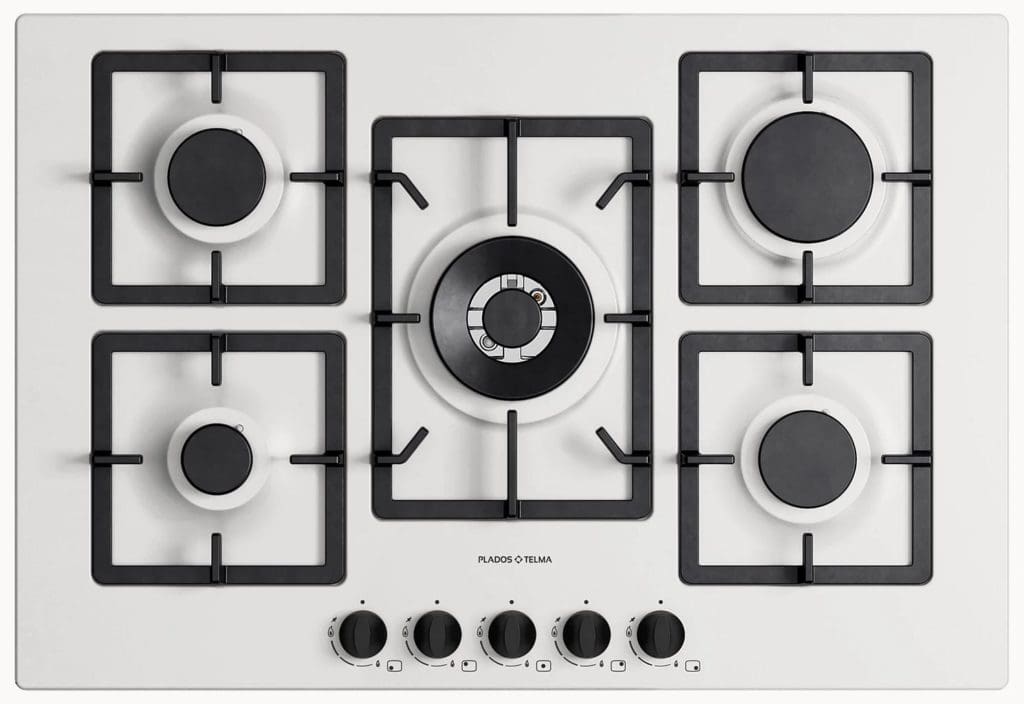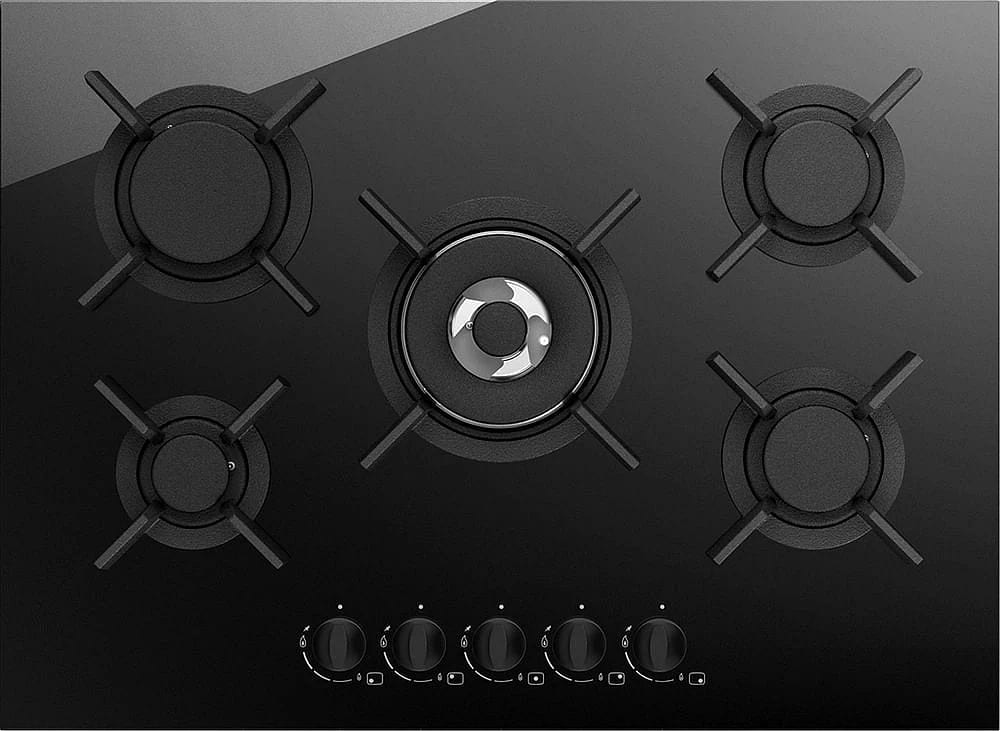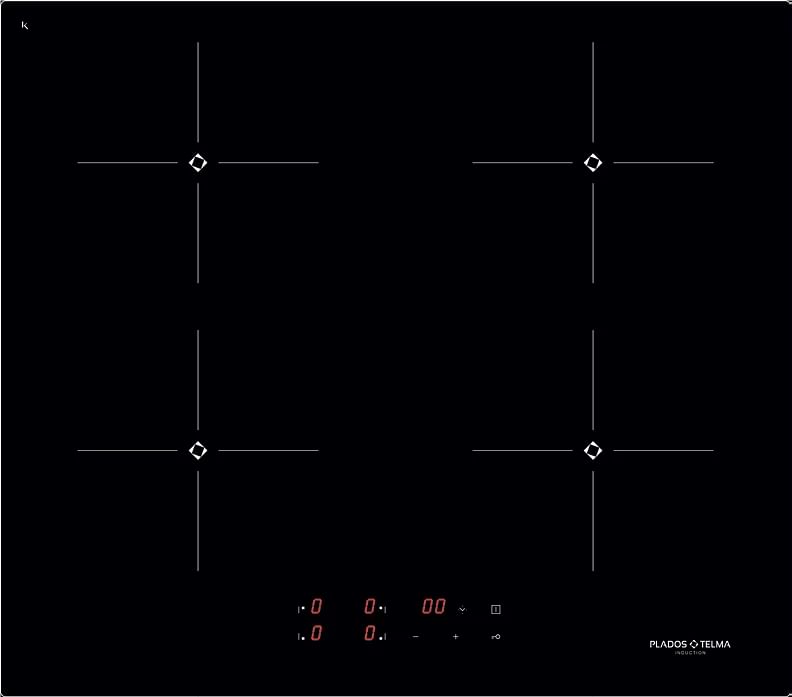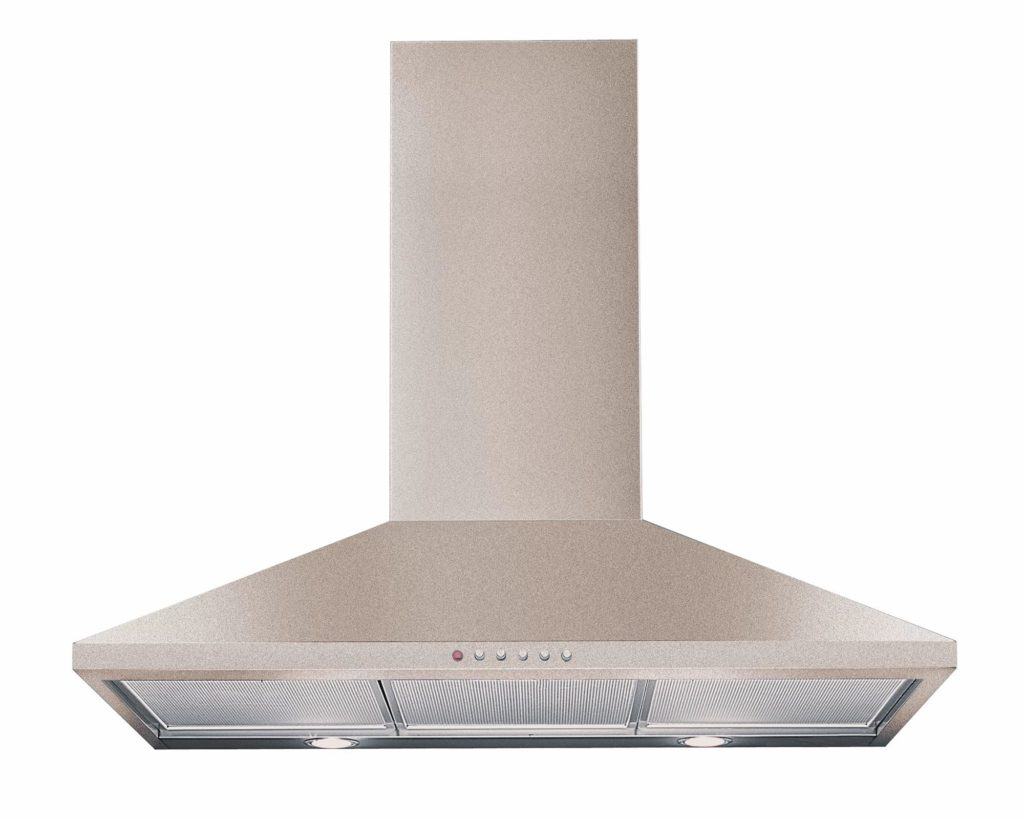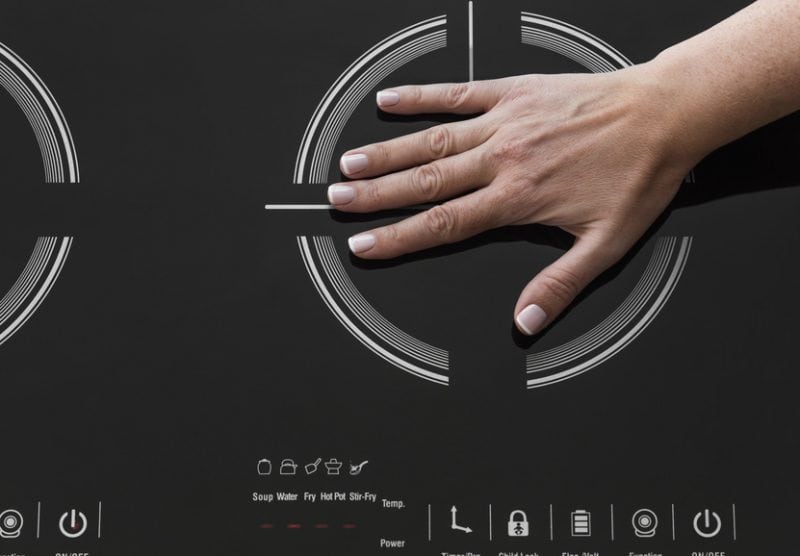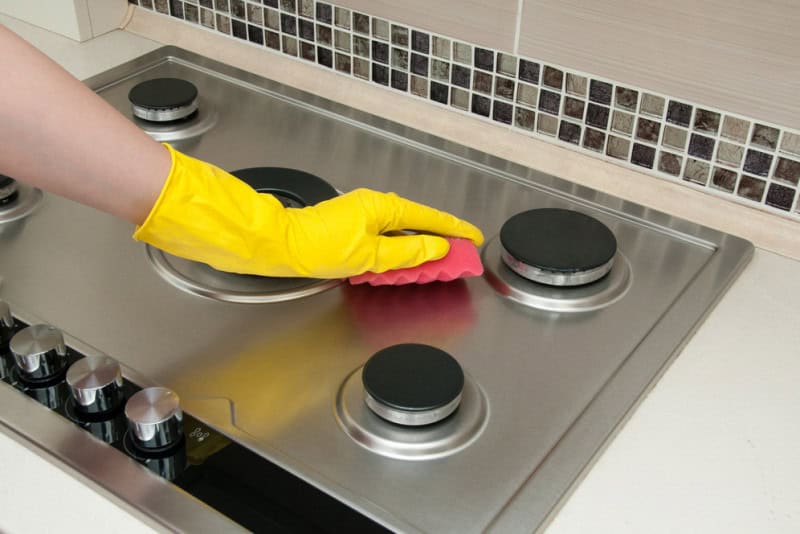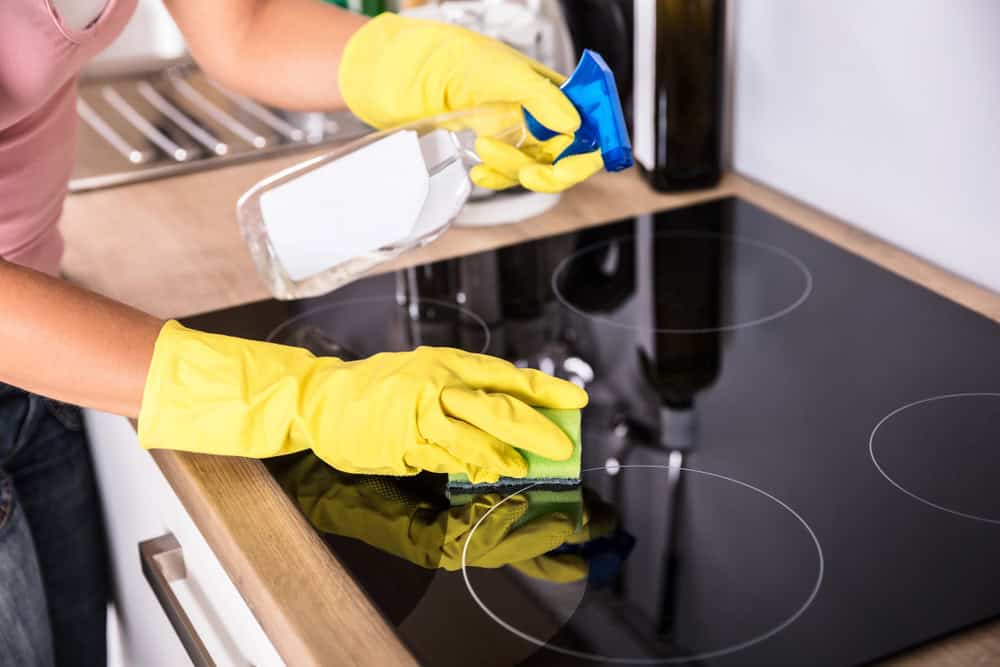Piani Cottura a Gas e Piani Cottura a Induzione: Caratteristiche tecniche
Premessa
Con il passare degli anni, e con le continue innovazioni tecnologiche anche in ambito casalingo, abbiamo visto evolvere e cambiare parecchi dei nostri piccoli e grandi elettrodomestici. Tra questi vi è anche il piano cottura della nostra cucina, che oggi, oltre a riproporre gli ormai consolidati piani cottura a Gas, vede il diffondersi a macchia d’olio dei nuovissimi piani cottura a Induzione.
Con questo breve articolo analizzeremo e spiegheremo le principali differenze tra questi due piani cottura, evidenziando i pro e i contro di ciascuno di essi.
I Piani Cottura a Gas e il loro funzionamento
Seppur ancora ampiamente presente nella maggior parte delle case degli italiani, una analisi di questa storica tipologia di piano cottura è doverosa.
Come si evince dal nome, il funzionamento di questo piano avviene tramite l’erogazione e la combustione di Gas Metano, nel caso degli apparati più nuovi, o di Gas GPL, nel caso degli impianti più vetusti.
Le parti principali che compongono i piani cottura a Gas sono:
- I Bruciatori: sono il punto in cui viene erogato il gas verso l’esterno e il luogo in cui risiede stabilmente la fiamma;
- La Termocoppia: è l’apparato di sicurezza che interrompe l’erogazione del Gas quando la fiamma del fornello si spegne o viene spenta;
- Le Griglie: sono le basi in metallo su cui vengono appoggiati i tegami in modo da garantire la stabilità di questi ultimi e permettere inoltre un corretto distanziamento tra il bruciatore e il tegame. Le griglie sono solitamente in metallo o in ghisa. La ghisa, oltre ad avere una maggior efficienza termica è anche più resistente e duratura nel tempo;
- Le Manopole di Erogazione: sono i dispositivi tramite i quali possiamo aumentare o diminuire l’erogazione del Gas, così da incrementare o ridurre la forza della fiamma;
- Tasto di Accensione (Scintilla): è il tasto che va premuto per far partire una scintilla alla base del bruciatore così da generare la fiamma. Ad oggi molti piani cottura hanno integrato questo bottone direttamente all’interno delle Manopole di Erogazione.
Per quanto concerne l’efficienza energetica, i piani cottura a Gas più moderni riescono a garantire un’efficienza del 65%.
In merito alla durata nel tempo, i piani cottura a Gas, con una corretta manutenzione settimanale, possono durare tranquillamente per 20 anni, proprio grazie alla semplicità della loro componentistica.
I Nostri Piani Cottura a Gas → ArredoItaliano ←
I Piani Cottura a Induzione e il loro funzionamento
I piani cottura a Induzione, invece, sono alimentati dalla comune elettricità casalinga. Hanno delle superfici in vetroceramica come i più generici piani cottura elettrici, ma hanno un funzionamento totalmente differente visto che non riscaldano la superfice in vetroceramica, bensì direttamente il pentolame posto sopra di esso.
Come si può capire dal nome, questa tipologia di piani di cottura sfruttano il principio dell’induzione. In pratica, attraverso delle bobine attraversata da corrente elettrica, viene generato un campo magnetico che riscalda direttamente la base delle pentole con fondo ferroso senza minimamente riscaldare il piano d’appoggio.
Proprio grazie a questo principio fisico, l’efficienza è superiore al 90%, garantendo così uno spreco energetico quasi del tutto trascurabile.
In merito alla durata nel tempo, i piani cottura a Induzione, pur non necessitando di alcuna manutenzione, potrebbero durare di meno rispetto alla loro controparte a Gas a causa di una componentistica più complessa e decisamente più sollecitata.
Le parti principali che compongono i piani cottura a Induzione sono:
- Il Piano Cottura in Vetroceramica: come già spiegato in precedenza, è un piano completamente liscio in materiale vetroceramico;
- Le Bobine: sono quella parte della componentistica che viene attraversata da corrente elettrica generando calore. Questo calore viene poi trasmetto direttamente alla base delle speciali pentole a fondo ferroso grazie ad un foglio di “mica” posto proprio sopra la bobina. Il “mica” è un minerali appartenente ala famiglia dei fillosilicati;
- Le Schede Elettroniche: rappresentano il cervello dei piani cottura a Induzione. Esse controllano e gestiscono tutta la componentistica assicurando la corretta comunicazione tra le varie parti dei piani cottura a Induzione;
- Gli Inverter: sono il vero cuore pulsante dei piani a Induzione. Questi dispositivi forniscono potenza alle bobine trasformando la tensione di ingresso da 230 Volt ad una tensione alternata. Essendo il componente più sottoposto a stress, gli Inverter sono quella parte dei piani cottura ad Induzione più soggetti a guasti;
- Il Pannello di Comando: per ultimo, ma non per importanza, abbiamo il Pannello dei Comandi. È composto da una scheda logica e da un chip contenente un software per la corretta gestione energetica. È il componente meno soggetto a guasti.
I Nostri Piani Cottura a Induzione → ArredoItaliano ←
Piani Cottura a Gas e Piani Cottura a Induzione: Differenze principali
Pentolame
Se per i piani cottura a Gas il comparto tegami è un mondo del tutto libero e aperto, lo stesso non si può dire per quanto concerne i piani cottura a Induzione. Questi ultimi, infatti, NECESSITANO di tegami compatibili per poter funzionare. In tal senso parliamo di tegami, pentole e padelle con fondo ferroso.
Essendo i piani cottura a induzione molto diffusi, soprattutto all’estero, è facile oggigiorno trovare tantissimi prodotti perfettamente compatibili con la nuova cottura a induzione.
Tuttavia, se si sta effettuando il passaggio da un piano cottura a Gas a un piano cottura a Induzione, bisognerà fare i conti con un cambio obbligato di tutte le pentole di casa. Difatti, come già spiegato, i tegami in alluminio, in rame, in ceramica e anche in vetro, non permetteranno il corretto funzionamento del piano cottura a Induzione, rendendo così del tutto impossibile la cottura delle pietanze.
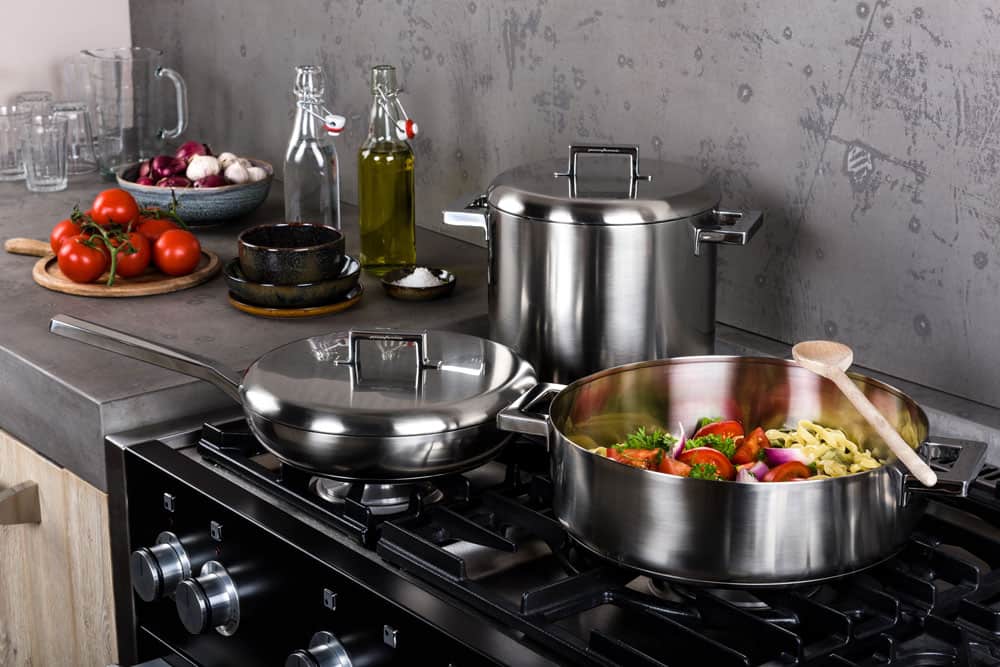
Piano Cottura a Gas 
Piano Cottura a Induzione
La Cappa
Un’altra differenza fondamentale tra queste due soluzioni di piani cottura riguarda la cappa. Per i piani cottura a Gas quest’ultima è OBBLIGATORIA per legge, mentre per quanto riguarda i piani a Induzione, oltre a non esserci alcun tipo di obbligo normativo, molto spesso gli stessi piani a Induzione sono muniti di un sofisticato sistema di aspiraggio integrato dei fumi e vapori della cottura.
Le Nostre Cappe → ArredoItaliano ←
Consumi, Risparmio Energetico ed Efficienza Energetica
Come accennato in precedenza i piani cottura a Induzione presentano il grandissimo vantaggio di avere un’efficienza energetica assolutamente impareggiabile. Se infatti i piani cottura a Gas di ottima fattura riescono al massimo a strappare un’efficienza del 65%, i piani cottura a induzione riescono senza troppa fatica a raggiungere e superare in alcuni casi il 90%.
Questa peculiarità dei piani cottura a Induzione è dovuta dal fatto che quasi la totalità del calore generato viene trasferito direttamente alla base del tegame. Questo passaggio è del tutto impossibile per i piani cottura a Gas visto che, nel caso di questi ultimi, buona parte dell’energia termica sprigionata dalla fiamma si disperde nell’ambiente casalingo.
Una maggiore efficienza energetica garantirà dunque un minor dispendio di energia e quindi un minor consumo sulla nostra bolletta. Maggior efficienza energetica = Maggior risparmio.
Tuttavia non è tutto oro quello che luccica. Se sulla carta i piani cottura a Induzione garantiscono un minor consumo dovremo fare i conti con due grossi problemi.
Prima di tutto, i piani cottura a Induzione rientrano nei grandi elettrodomestici per quanto riguarda l’assorbimento energetico. Pertanto, se decideremo di adottare un piano cottura di questo tipo dovremo assicurarci che il nostro contatore sia abbastanza potente per poter gestire nuovo carico energetico richiesto onde evitare fastidiosi blackout.
In secondo luogo, il costo dell’energia elettrica è molto più alto rispetto a quello del gas. Pertanto, se la nostra unica fonte di approvvigionamento elettrico è la rete nazionale, pur avendo consumi minori dovremo far fronte a spese maggiori rispetto a quelle dei piani cottura a Gas.
Ipotizzando una stima approssimativa dei consumi, ecco un esempio concreto. Per avere bisogno di 500 kWh di calore in pentola all’anno, e tenendo conto di un’efficienza termica al 50%, con il piano a gas, avremmo bisogno di 1000 kWh all’anno. Con i piani cottura ad induzione avremmo invece bisogno di circa 550 kWh / anno di energia elettrica.
Con i piani cottura a Gas avremo bisogno di circa 95 m³/anno di gas per cucinare, per una spesa di 75 Euro/anno
Con i piani cottura a Induzione ci servirebbero invece 550 kWh/anno di energia elettrica per una spesa di 105 Euro/anno.
Rifacendoci solamente ai consumi e ai costi operativi, in una normale situazione di fornitura elettrica dalla rete statale, possiamo affermare che non c’è effettivamente convenienza nei piani cottura a Induzione, proprio per il fatto che il costo dell’elettricità è di molto superiore a quello del Metano.
Totalmente diverso invece sarebbe il caso in cui la nostra abitazione fosse munita di pannelli fotovoltaici. In questo caso, il costo energetico richiesto dai piani cottura a Induzione sarebbe zero. In tal caso sarebbe davvero ideale il sistema di cottura a Induzione vista la totale indipendenza e autosufficienza energetica della casa.
In ogni caso, qualunque sia la scelta finale, il passaggio ad un piano cottura di nuova generazione con Classe di efficienza non inferiore ad A+ garantirà, oltre ad un risparmio in bolletta, anche delle agevolazioni fiscali grazie al → Bonus Mobili dell’Agenzia delle Entrate ←
Sicurezza
Dal punto di vista della sicurezza non si può non strizzare un occhio ai piani cottura a Induzione. Difatti, anche se i moderni piani cottura a Gas hanno raggiunto degli standard di sicurezza davvero eccelsi, la massima sicurezza si potrà sempre e solo raggiungere bandendo completamente ogni tipologia di Gas dalla nostra casa. Con i piani cottura a Induzione non ci saranno più pericoli di fughe o perdite di Gas.
Inoltre, essendo i piani cottura a Induzione studiati apposta per scaldare solo le superfici per cui sono stati creati, sarà del tutto impossibile ustionarsi appoggiando la mano sul piano in vetroceramica, cosa che invece potrebbe tranquillamente accadere con i piani cottura a Gas visto l’utilizzo di una fiamma libera.
La Pulizia del Piano Cottura
Altro punto a favore dei piani cottura a Induzione. Una superficie perfettamente liscia e in materiale non poroso come la vetroceramica vi permetterà di pulire il piano cottura con pochissimi colpi di spugna. Senza contare che i piani cottura a Induzione non necessitano di alcuna manutenzione settimanale.
Totalmente diverso è il discorso per i piani cottura a Gas. Infatti, essendo composti da più componenti incastrati e/o appoggiati uno sopra l’altro, sarà necessario più di qualche minuto per smontare e pulire ogni singolo pezzo. Questa procedura di pulizia e manutenzione si rende assolutamente necessaria onde evitare di danneggiare parzialmente o irrimediabilmente i piani cottura a Gas.
Piani Cottura a Gas e Piani Cottura a Induzione: Riassumendo
Piani Cottura a Induzione: i Pro
- Design elegante;
- Facilissimi da pulire;
- Non necessitano di manutenzione;
- Efficienza energetica impareggiabile (oltre il 90%);
- Assenza di fiamma e maggior sicurezza;
- Tempi di cottura potenzialmente ridotti;
- Si possono poi impostare diversi livelli di temperatura e tempi di cottura;
- In presenza di pannelli fotovoltaici il consumo si azzera del tutto.
Piani Cottura a Induzione: i Contro
- Se pur più efficienti, il costo in bolletta sarà sempre superiore rispetto alla controparte a Gas;
- Estrema delicatezza del piano cottura in vetroceramica;
- Prezzo d’acquisto nettamente superiore rispetto alle varianti a Gas;
- NECESSITANO di pentole specifiche con fondo ferroso per funzionare;
- Si perde completamente il feeling di cucinare con la fiamma;
- Potrebbe essere necessario aumentare la potenza del contatore di casa.
Piani Cottura a Gas: i Pro
- Design classico;
- Facilità di utilizzo;
- I modelli più recenti hanno un’efficienza energetica molto buona (fino al 65%);
- Prezzo d’acquisto contenuto;
- Il metano per il loro funzionamento costa davvero poco;
- Compatibili con tutti i tipi di pentole;
- Feeling della cottura con fiamma.
Piani Cottura a Gas: i Contro
- Pulizia del piano cottura nettamente più laboriosa rispetto al corrispettivo a Induzione;
- Necessitano di manutenzione periodica onde evitare malfunzionamenti;
- Emettendo fiamme libere sono sempre potenzialmente pericolosi e a rischio incendi;
- Installazione più complessa vista la necessità di un allacciamento del Gas.

